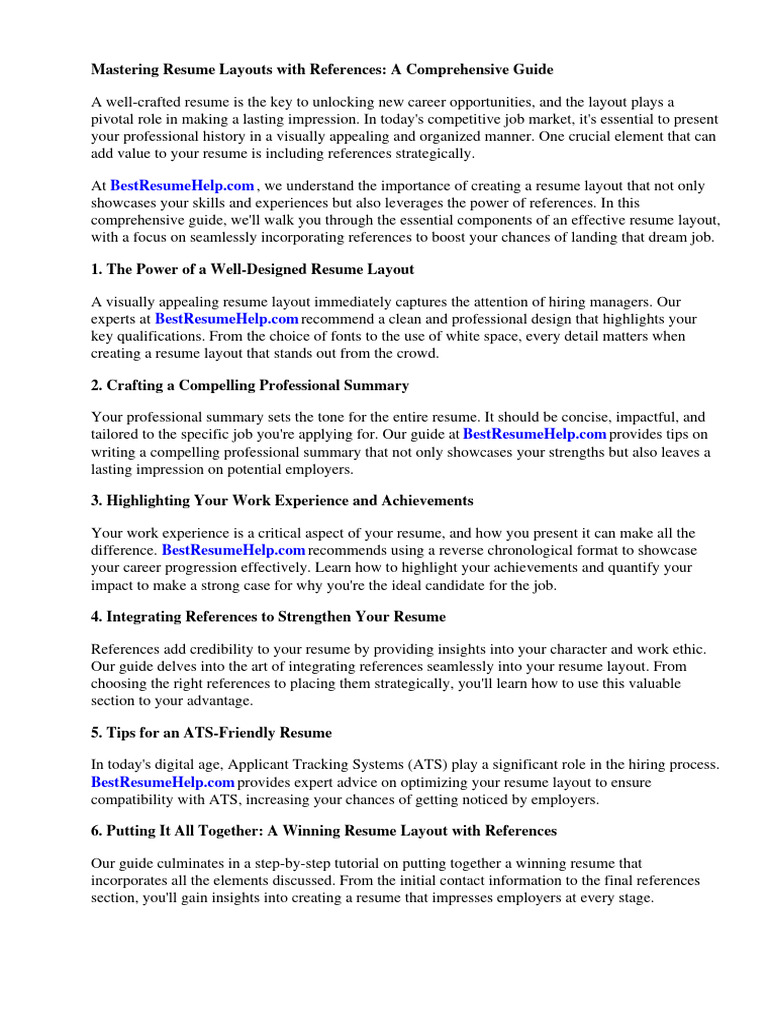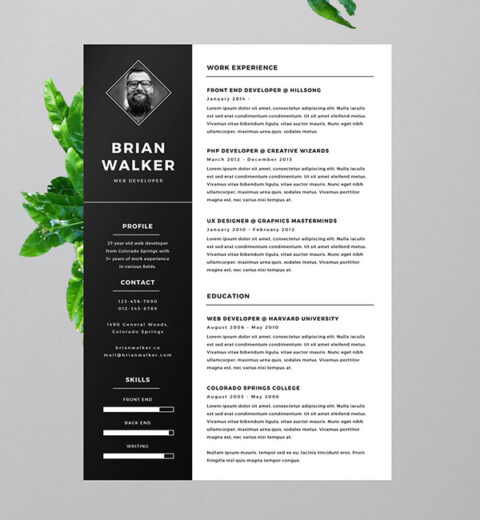In the rapidly evolving landscape of job applications, one contentious question persists: should a resume include references? The modern view on this subject reveals a nuanced perspective that merits careful examination. Traditionally, references were not just peripheral details; they were integral components of a job application, carrying substantial weight in the hiring process. However, times have changed, and with them, the expectations surrounding resumes and references have transformed.
The first point of consideration revolves around the historical context of references in resumes. In earlier decades, hiring managers relied heavily on references to gauge a candidate’s character and competencies. A well-placed recommendation could be the deciding factor between two equally qualified candidates. This was particularly true in industries where personal connections played a pivotal role in recruitment, such as in academia or specialized trades. Moreover, references acted as a form of social proof, verifying claims made in the resume and providing an external endorsement of the applicant’s skills.
As digital communication and online networking platforms have become predominant, the role of references has undergone a significant metamorphosis. The advent of professional networking sites has shifted how potential employers vet candidates. With platforms like LinkedIn, hiring managers can readily access endorsements and recommendations from former colleagues and supervisors. These online testimonials frequently serve as informal references, creating a reservoir of insights that can be reviewed without the need for explicit mention on a resume.
Furthermore, it is essential to explore the practical implications of including references on a resume. Many contemporary experts advocate for omitting references directly from the document. Instead, they recommend preparing a separate list of references to provide upon request. This approach not only conserves valuable resume real estate for skills and experiences but also offers candidates a degree of control over their references. By managing when and how references are contacted, applicants can ensure that their recommenders are adequately informed and prepared to discuss their qualifications.
Moreover, integrating references into the resume can unintentionally raise certain quandaries. For instance, it can inadvertently imply that a candidate lacks confidence in their own qualifications, suggesting that they are relying on external validation rather than their intrinsic capabilities. In today’s competitive job market, candidates are encouraged to showcase a proactive attitude, emphasizing their competencies and accomplishments without leaning disproportionately on the words of others.
However, the decision to include or exclude references is not solely based on current trends but is also influenced by the norms established within specific industries. Certain fields, such as academia, healthcare, and government, may still uphold strong traditions concerning references. Applicants within these sectors may find themselves at a disadvantage if they neglect to provide references upfront. In contrast, industries characterized by rapid innovation, such as technology and creative fields, tend to lean towards a more streamlined approach, opting for concise resumes that highlight accomplishments over ancillary details.
Another layer of complexity arises when considering the timing of when references should be shared. While it may be beneficial to provide a curated list of references during the application process, many hiring managers prefer to request references after the initial interview stages. This preference underscores the idea that references should corroborate both the skills and cultural fit of a candidate, rather than just convey their past achievements. As such, an applicant might wish to anticipate this dynamic and prepare a robust set of references whose skills align well with the role in question.
A conundrum that applicants often grapple with is the question of how many references to provide. A common recommendation is to prepare a list that includes three to five well-chosen individuals. The rationale behind this figure is simple: it allows for varied perspectives while maintaining an efficiently manageable list for hiring managers. Each reference should ideally encompass different facets of the candidate’s skills, experiences, and work ethic, providing a well-rounded representation of the individual.
Moreover, the nature of the references is critical to consider. Candidates should opt for individuals who can speak authentically and positively about their work. It may be prudent to select references who truly know the candidate’s work, as a superficial endorsement might do more harm than good. Further, potential applicants must communicate with their references before listing them, ensuring that these individuals are not only willing but also enthusiastic in their support. This conversational engagement establishes rapport and guarantees that when contacted, the references are prepared to provide a thoughtful and engaging endorsement.
In conclusion, the question of whether to include references on a resume invites a multifaceted discussion. While the traditional view supported a more prominent role for references, modern practices suggest a more strategic approach tailored to individual needs and industry specifics. Candidates should carefully weigh the implications of including or excluding references based on current market trends, desired industry practices, and the strategic intent behind their applications. Ultimately, an awareness of these subtle dynamics can empower candidates to present their qualifications in a manner that is both compelling and strategic.




